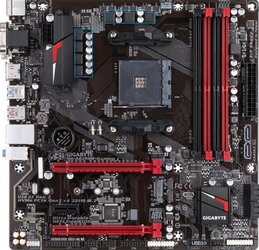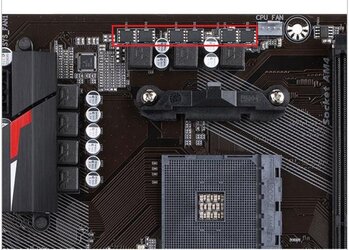I'm a little concerned about the VRM temperatures on my motherboard, as when the CPU is under heavy load, the VRM temperatures go just over 100°C, and that's in winter with a 21°C room temperature. I'd hate to think how hot they'd get when summer arrives.
The case has fairly good airflow with 3X Noctua 140mm fans that spin around 1000RPM under load. I was thinking of getting a VRM heatsink kit and using thermal tape to stick the heatsinks onto the VRM components. I've worked pretty hard to build a powerful, quiet gaming rig and I don't want to ruin that with a tiny, high RPM fan. If the temperatures are still excessive after I've installed the heatsinks, then I'll put a 40mm or 60mm PWM fan to blow air directly onto the VRMs.
Being completely new to this, I'd also like to confirm exactly which components I'm trying to cool. I know the main VRM is already cooled by the black/red/white heatsink on the top left of the pic. I was planning on installing the heatsinks on the components that are in the blue boxes. Are these all of the VRM components covered?

The case has fairly good airflow with 3X Noctua 140mm fans that spin around 1000RPM under load. I was thinking of getting a VRM heatsink kit and using thermal tape to stick the heatsinks onto the VRM components. I've worked pretty hard to build a powerful, quiet gaming rig and I don't want to ruin that with a tiny, high RPM fan. If the temperatures are still excessive after I've installed the heatsinks, then I'll put a 40mm or 60mm PWM fan to blow air directly onto the VRMs.
Being completely new to this, I'd also like to confirm exactly which components I'm trying to cool. I know the main VRM is already cooled by the black/red/white heatsink on the top left of the pic. I was planning on installing the heatsinks on the components that are in the blue boxes. Are these all of the VRM components covered?

